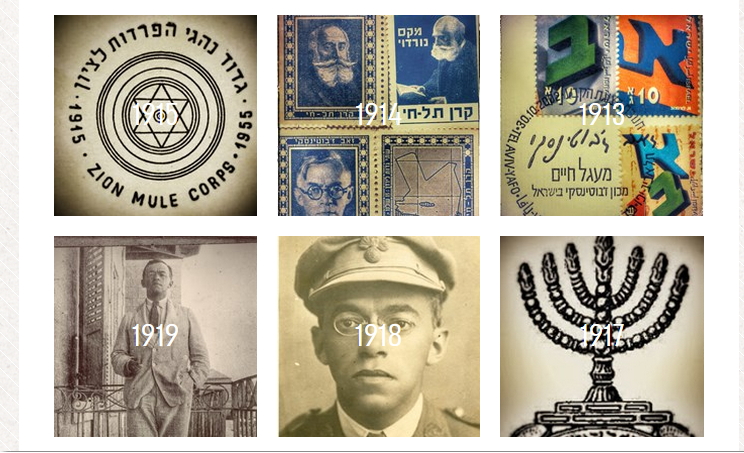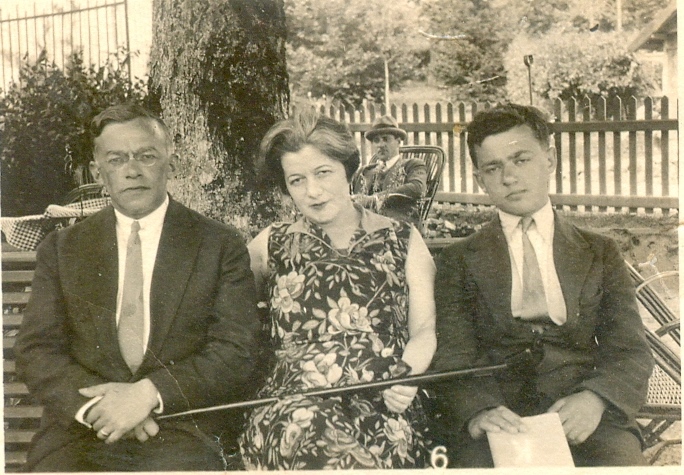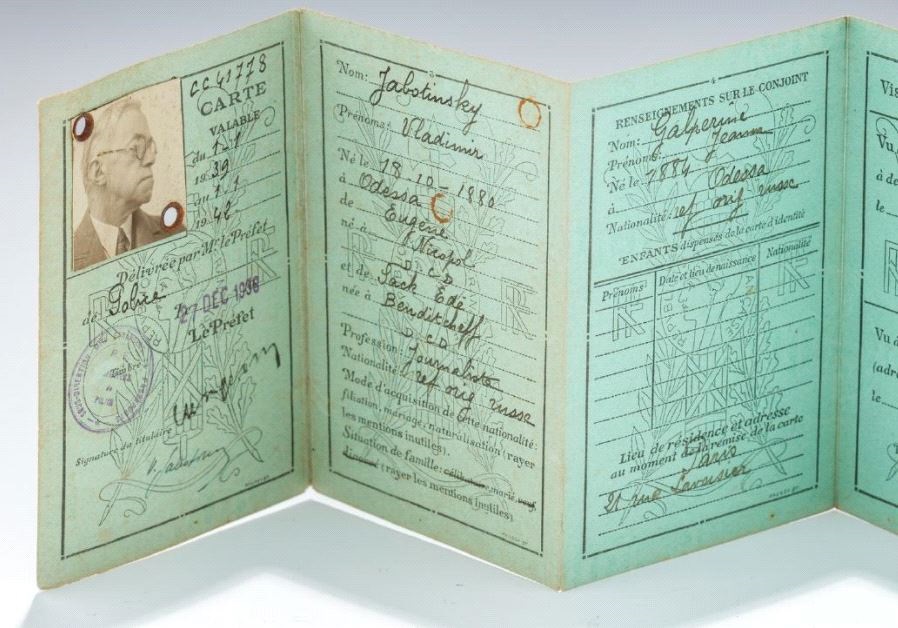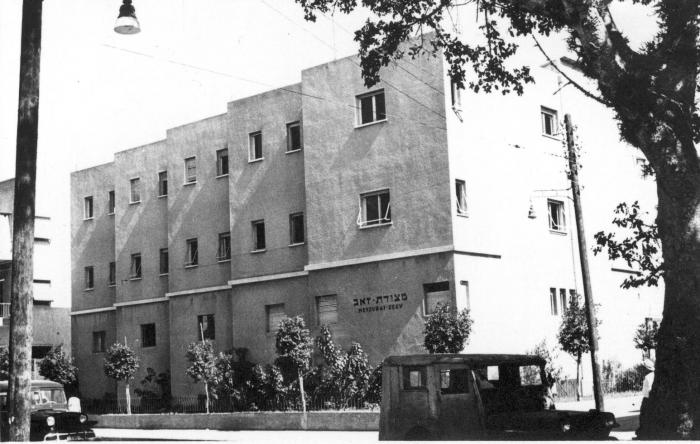Jabotinsky Institute, Tel Aviv
Plan Your Visit
- Open Times: Sunday -Thursday 08:30- 16:00, closed Friday, and Saturday.
- Prices: Adults 20 IL, children (5yrs-18yrs) 15 ILS. Pro Tip: The entrance fee to the Jabotinsky Museum gives you free entry to the Etzel Museum.
- Average Visit Duration: 1 hour.
- Popular Times: The institute is often visited by groups of schoolchildren so it is best to arrive in the afternoon when there are less likely to be large groups of students.
- Special Events: There are regular workshops, lectures, seminars, and special events, especially during Israeli school holidays.
- Relevant Tours: On a private tour of Tel Aviv, you can include a stop at the Jabotinsky Institute.
The Jabotinsky Institute was established over 70 years ago to preserve the legacy of Ze’ev Jabotinsky. The part of the institute that interests tourists is the institute’s museum which focuses on the life and works of Jabotinsky and the Revisionist Movement. This museum is a hidden gem that will give you an excellent overview of the early days of the country, and the heroic Zionist organizations that worked tirelessly to lay the foundation for the State of Israel.
 The life and work of Ze'ev Jabotinsky (Image source: The official Jabotinsky Institute website)
The life and work of Ze'ev Jabotinsky (Image source: The official Jabotinsky Institute website)The Jabotinsky Institute is located on the 1st floor of Metzudat Zeév or Jabotinsky House. Metzudat Zeév is one of the oldest tower blocks in the city and was built on the site of the original shack where members of the Revisionist Zionism Movement would meet.
Pro Tip: In the same building are the Irgun Museum, and the Partisan and Fighters Museum as well as several offices of organizations and businesses.
Who Was Zeév Jabotinsky?
Vladimir Jabotinsky (1880-1940) was a prominent Jewish political figure, Zionist leader, and writer. Born in Odessa, then part of the Russian Empire, Jabotinsky became involved in Jewish activism early in his life. He initially aligned with the socialist Zionist movement, but later broke away to form the Revisionist Zionist Movement.
Jabotinsky advocated for a more assertive and militant approach to achieving Zionist goals. He emphasized the importance of Jewish self-defense and called for the establishment of a Jewish state on both banks of the Jordan River. His political ideas and strategies often clashed with mainstream Zionist leadership.
 Jabotinsky with his wife and son (Image source: The official Jabotinsky Institute website)
Jabotinsky with his wife and son (Image source: The official Jabotinsky Institute website)
Throughout his life, Jabotinsky was involved in various political and military activities. He organized self-defense units during periods of anti-Jewish violence in Eastern Europe and played a key role in the creation of the Jewish Legion during World War I. However, his vision of a Jewish state did not materialize during his lifetime.
Vladimir Jabotinsky's legacy lives on through the Revisionist Zionist Movement and the political ideologies he promoted. His writings, including essays, articles, and speeches, continue to influence discussions on Jewish identity, Zionism, and the geopolitics of the Middle East.
What Was Jabotinsky’s Revisionist Movement?
The Revisionist Zionist Movement was officially established in 1925 by Vladimir Jabotinsky. It was a fraction of the Zionist Movement that believed in a more aggressive approach to attaining a Jewish State. They held demonstrations, appealed to international powers, and used force to protect themselves from attacks.

The Revisionists challenged mainstream Zionist notions, advocating for territorial ambitions in Eretz Israel. Despite tensions between the various Zionist factions, the Revisionist Movement’s impact endured, shaping the trajectory of the State of Israel and influencing ongoing discussions about Jewish identity and the geopolitics of the Middle East.
The Revisionist movement lasted until the 1940s, and following Jabotinsky's death in 1940, his followers continued to be influential in Israeli politics and contribute to the establishment and evolution of the modern State of Israel. The legacy of the Revisionist Movement persists, and its ideological descendants have been active in Israeli politics, leaving a lasting imprint on the country's political landscape.
What To Expect From the Jabotinsky Museum
The Life and Times of Ze’ev Jabotinsky
Jabotinsky’s life, beliefs, and political ideology are presented in a dynamic and inspiring way. Visitors are taken through the various stages of Jabotinsky’s life from his childhood in Odessa to his death in New York, and his state funeral in Israel 24 years later.
There is an emphasis on the establishment of the Revisionist Movement, the New Zionist Organization, and the Betar Youth Movement. There are 14 three-dimensional displays presented with audio and visual effects. A 15-minute film is presented on six screens and features an imaginary conversation between Jabotinsky and his son.
The National Sport - Af-Al-Pi Immigration
This section of the museum consists of a film and exhibit telling the story of the Revisionist Movement’s illegal immigration. Starting from 1934, 30 ships of Jewish immigrants entered British-ruled Palestine illegally. In total approximately 20,000 immigrants arrived safely in Eretz Israel thanks to the movement which saved them from the fate of awaiting European Jews.

The HQ of the Revisionist movement in the 1930's (Image source: The official Jabotinsky Institute website)
Jabotinsky was instrumental in orchestrating the operation and he playfully referred to it as the National Sport. The interactive experience takes museum visitors into the exhibit in a “boat” so that they get a taste of what it might have been like for those early immigrants.The visual and sound effects surround the visitors giving them an immersive experience that includes the occasional splash of seawater onto the boat. Pro Tip: This experience is presented in English, Hebrew, French, and Russian.
Highlights of the Jabotinsky Museum, Tel Aviv
The Archive
The archive of the documents, publications, news clippings, and photographs of the Revisionist Movement.
The archive holds over a million items relating to the institutions and movements that existed at the time of Israel’s establishment. For example, there are documents about the Herut Party, Lehi, Etzel, Likud, and the Betar Movement.
There are assistants on hand to help you find anything specific you are looking for and there are reading rooms, computers, and a microfilm reader. Note that the archive material is predominantly in Hebrew.Pro Tip: The institute hosts study days and seminars.
Historical Exhibits
The museum features exhibits chronicling Jabotinsky's life, from his early years in Russia to his involvement in Zionist activities and the establishment of the Revisionist Zionist movement.
Personal Artifacts
Visitors can see personal artifacts belonging to Jabotinsky, providing insights into his life, including letters, manuscripts, and personal belongings.
The Jabotinsky Legacy
The museum explores Jabotinsky's ideological contributions, emphasizing his vision for a Jewish state and the principles of the Revisionist Zionist movement.
 Login / Register
Login / Register
 Contact Us
Contact Us
 Certificate of Excellence
Certificate of Excellence Guaranteed Departure
Guaranteed Departure Low Prices Guaranteed
Low Prices Guaranteed 24/7 Support
24/7 Support




